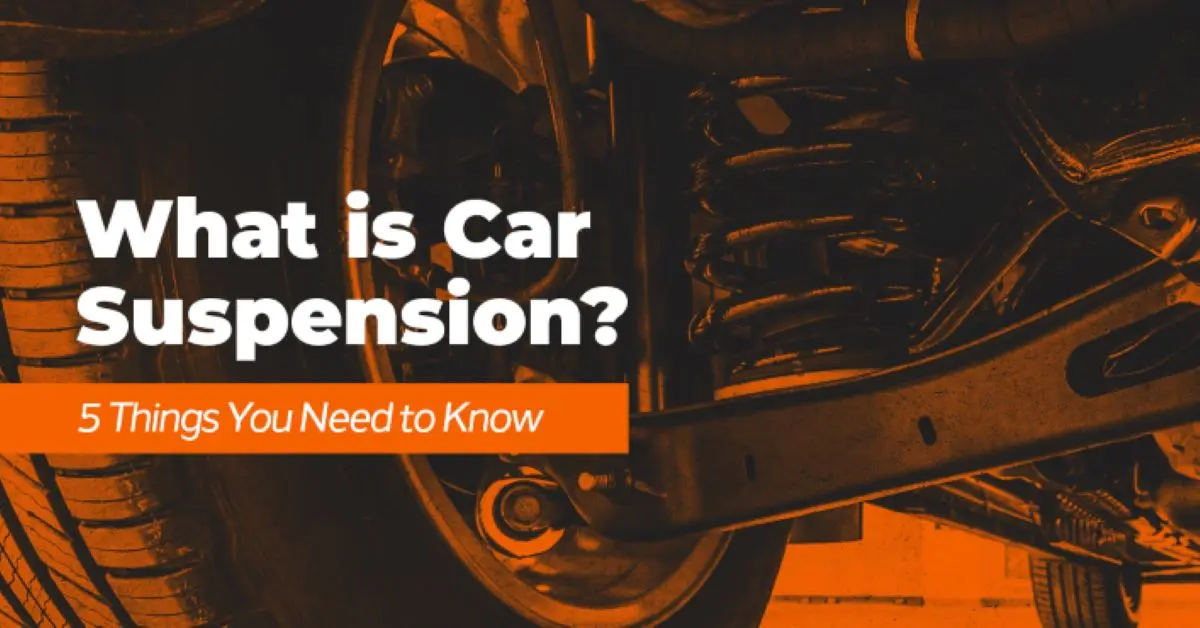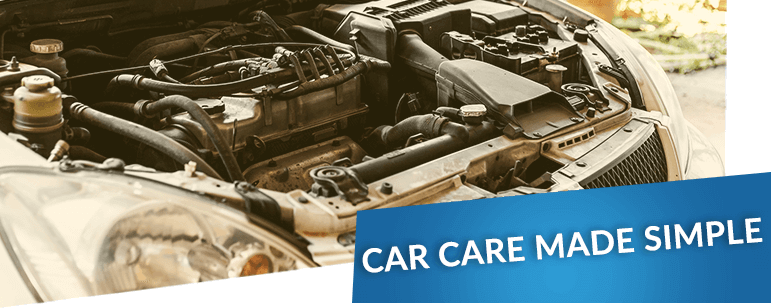Your car’s suspension system smooths out bumps in the road and provides traction by keeping the wheels on the ground.
You can enjoy a comfortable driving experience as a result.
Without a working suspension system, your car could lose grip on the road, so you must have suspension issues fixed promptly.
Read on and find out what car suspension is, how it works and how to inspect the suspension on your car.
Page Contents
What is the Suspension on a Car?
The suspension system in a car connects the vehicle to its wheels, allowing motion between the two.
The main functions of the suspension system are to absorb the energy transferred through your car’s wheels, and to help your car ride smoothly – even on uneven terrain.
When working well, the suspension system helps to support the weight of the vehicle, prevents excessive bouncing, and maintains optimal tyre contact with the road.
You can steer your vehicle effectively and enjoy more comfortable handling.
A well-maintained suspension system can even increase the lifespan of your car.
How Does It Work?
There are 7 main suspension parts that make up a car's suspension system:
- Springs
- Shock absorbers
- Struts
- Anti-roll bars
- Anti-roll bar link rods
- Bottom suspension arm
- Top strut mount
Springs
The most common spring found on modern cars and light vans is the coil spring, but you can also find leaf springs.
The springs coil and uncoil to absorb the motion of the wheels.
Engineers often talk about the sprung and unsprung mass of a car, due to where the springs are fitted.
Sprung mass is the vehicle’s mass supported on the springs, whilst unsprung mass is the mass supported between the road and the springs.
Shock Absorbers
Without shock absorbers, springs alone cannot provide the smoothest ride.
Shock absorbers control unwanted spring motion through dampening.
They sit between the frame of the car and the wheels, absorbing the energy from the springs.
A shock absorber contains hydraulic fluid and acts like an oil pump.
This fluid slows down the movement of the shock absorber, in turn slowing down the movement of the spring.
If your suspension is creaking, then you may need to book a shock absorber replacement.
For your safety, you must have your vehicle inspected by a professional garage if you suspect that your shock absorbers are faulty.
Your shock absorbers may need to be replaced if tyre tread looks wavy, your car bounces more than usual when driving over bumps, or your stopping distance is up to 20% further than usual.
Struts
Shocks and struts are similar components, but they serve different purposes.
Most cars use a MacPherson suspension system.
In this design, coil springs and shock absorbers are fitted together and known as a strut.
Struts still dampen the spring’s bounciness, but also provide more structural support for the suspension than shock absorbers do.
They are fitted to the front of a car and the top is connected to the body and the bottom to a suspension arm.
Anti-roll Bars
Anti-roll bars give the vehicle extra stability.
They are metal rods that span the entire axle and join the sides of the suspension together.
When one side moves up and down, the anti-roll bar transfers movement to the other wheel.
This creates a more level ride and makes for smooth cornering.
Anti-roll Bar Link Rods
Link rods connect the suspension parts to either end of the anti-roll bar.
They are usually light metal or plastic rods with a ball joint on one or both ends.
Link rods help your car when one side of the suspension moves but the other does not.
Bottom Suspension Arm
The bottom suspension arm is one of two control arms in the front suspension system.
It connects the car’s frame to the front wheel assembly and holds the front wheels on the road.
These arms can swing up and down as the wheels roll over bumps, allowing your car to move smoothly.
Top Strut Mount
The top strut mount attaches the struts to the vehicle.
It also insulates against tyre noise and vehicle vibrations.
Are Front and Rear Suspension Different?
Most modern cars are front-wheel drive, so need flexible, response front suspension to work properly. This is known as independent suspension, which allows each wheel on the same axle to move on its own.
Rear suspension doesn’t need to accommodate a steering system, meaning they are usually dependent suspension systems.
These have a rigid axle connecting the wheels, which is kept in place by leaf springs and shock absorbers.
If independent suspension is also used at the rear, the vehicle will have four-wheel drive.
While cars can use the same suspension system at the front and rear, most vehicles use a mix of dependent and independent.
Independent suspension is more expensive to produce and more important to have at the front of the car than the rear.
How Do You Inspect Car Suspension?
If you want to inspect your car’s suspension, you can carry out the bounce test as shown in this video.
Alternatively, you can first examine the strut mounts and shock absorbers by locating them under the hood of your car.
You will find them above each wheel, where they will be secured down with bolts.
Ensure that the fasteners are not covered in rust or loose, as they will not function correctly if so.
Measure the height of the empty space between the top of the tyre and the bottom of the wing of the car.
This will help you determine whether there is an issue with your suspension, and which side of the car this is affecting.
The measurements should be fairly equal, but a slight difference in height is fine.
If they are unequal, then the lower side could be where the problem is being caused.
Check the bolts that secure the suspension components.
They should be tight and have no excessive rust.
If a bolt is rusty, use a screwdriver to prod the area.
If the rust comes off, then the bolt will need to be replaced.
Make sure you tighten any loose bolts, too.
Has the Suspension Gone on My Car?
If the suspension system in your car is failing, you will notice the car drifts or pulls when turning corners.
You may also hear a knocking sound at the same time.
A damaged anti-roll bar could be to blame, as it won't be keeping the car stable against the force of the turn.
You must have this checked out immediately to avoid any serious safety risks.
Other common car suspension problems include a bumpier ride, poor handling and abnormal tyre tread wear.
How Long Does Your Car's Suspension Last?
Your car suspension should last for between 50,000 and 100,000 miles before you need to replace any suspension parts.
This can depend on your driving habits and commitment to vehicle maintenance.
Shock absorbers should be replaced every 50,000 miles or 5 years.
How Much Is a Shock Absorber Replacement?
Shock absorbers are an integral part of your car's suspension system.
On average, a shock absorber replacement can cost anywhere from £350 to upwards of £600 in the UK.
The price can be even higher if your suspension mounts also need to be replaced.






